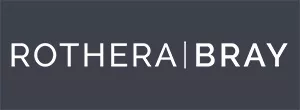- within Tax topic(s)
- in United States
- with readers working within the Retail & Leisure industries
- in United States
- within Law Department Performance, Media, Telecoms, IT, Entertainment and Intellectual Property topic(s)
- with Senior Company Executives, HR and Finance and Tax Executives
- with readers working within the Business & Consumer Services and Insurance industries
From 1st April 2025, Stamp Duty rates are set to rise with the reduction of two key thresholds.
Jackie Murphy, Conveyancing Solicitor at our West Bridgford office, explains what Stamp Duty is and why the rates are changing. She also discusses how these changes could affect those purchasing property.
What is Stamp Duty?
Stamp Duty, also known as Stamp Duty Land Tax (SDLT), is a government tax paid by property buyers to HM Revenue and Customs. It is paid as a lump sum upon completion of the purchase. It is paid by buyers who are purchasing property or land over a certain price bracket.
The amount of SDLT that you may have to pay depends on several factors (but is not limited to) whether you are:
- a UK resident
- purchasing a property in your individual name or through a company
- a first-time buyer (i.e. you have never owned or part owned a property anywhere in the world)
- replacing your main residence (i.e. selling your current property and completing your new purchase at the same time)
- purchasing an additional property
Why is Stamp Duty changing?
In September 2022, the Conservative Government announced a temporary change to the existing Stamp Duty provisions. The goal was to reduce the upfront costs associated with moving home. The idea behind this initiative was to support the housing market and safeguard jobs and businesses that rely on it. It also aimed to assist those hoping to get onto the housing ladder for the first time.
Although these changes were initially announced as permanent, the Government later revised its decision. In the 2022 Autumn Statement, it confirmed that the changes would end on 31 March 2025.
How will these changes affect me and my property purchase?
From 1 April 2025, there will be a number of changes coming into effect in relation to SDLT:
- The nil-rate threshold which is currently £250,000 will return to £125,000.
- The nil-rate threshold for first-time buyers which is currently £425,000 will return to £300,000.
- The maximum purchase price where first-time buyers can claim First-Time Buyers Relief (a reduced rate of Stamp Duty) which is currently £625,000 will return to £500,000. (If the property you are purchasing is more than £500,000 and you are a first-time buyer, you will not be eligible to claim First-Time Buyers Relief).
What are the SDLT thresholds?
The threshold is where SDLT starts to apply. If you buy a property for less than the threshold, then there is no SDLT to pay.
| Proportion of property value | Rate for main residence (up to 31 March 2025) | Rate for main residence (from 1 April 2025) |
| Up to £125,000 |
0% |
0% |
| £125,001 to £250,000 | 2% | |
| £250,000 to £925,000 | 5% | 5% |
| £925,001 to £1.5 million | 10% | 10% |
| Over £1.5 million | 12% | 12% |
How will the Stamp Duty changes impact second home purchases and investment property purchases?
The SDLT due on second homes and investment properties is subject to a higher rate than the rates that are applied to normal residential purchases. However, the changes to SDLT will also affect those buying second homes, buy-to-let investors and those purchasing properties through a company.
Stamp Duty rates for additional properties
| Proportion of property value | SDLT rate for additional property (up to 31 March 2025) | SDLT rate for additional property (from 1 April 2025) |
| Up to £125,000 |
5% |
5% |
| £125,001 to £250,000 | 7% | |
| £250,001 to £925,000 | 10% | 10% |
| £925,001 to £1.5 million | 15% | 15% |
| Over £1.5 million | 17% | 17% |
Please note, these changes only affect residential property purchases, not commercial property.
For all of the latest information about Stamp Duty, please visit the UK Government website (www.gov.uk/stamp-duty-land-tax/residential-property-rates)
The UK Government also have a handy Stamp Duty Calculator (www.tax.service.gov.uk/calculate-stamp-duty-land-tax/#!/intro)
The content of this article is intended to provide a general guide to the subject matter. Specialist advice should be sought about your specific circumstances.


